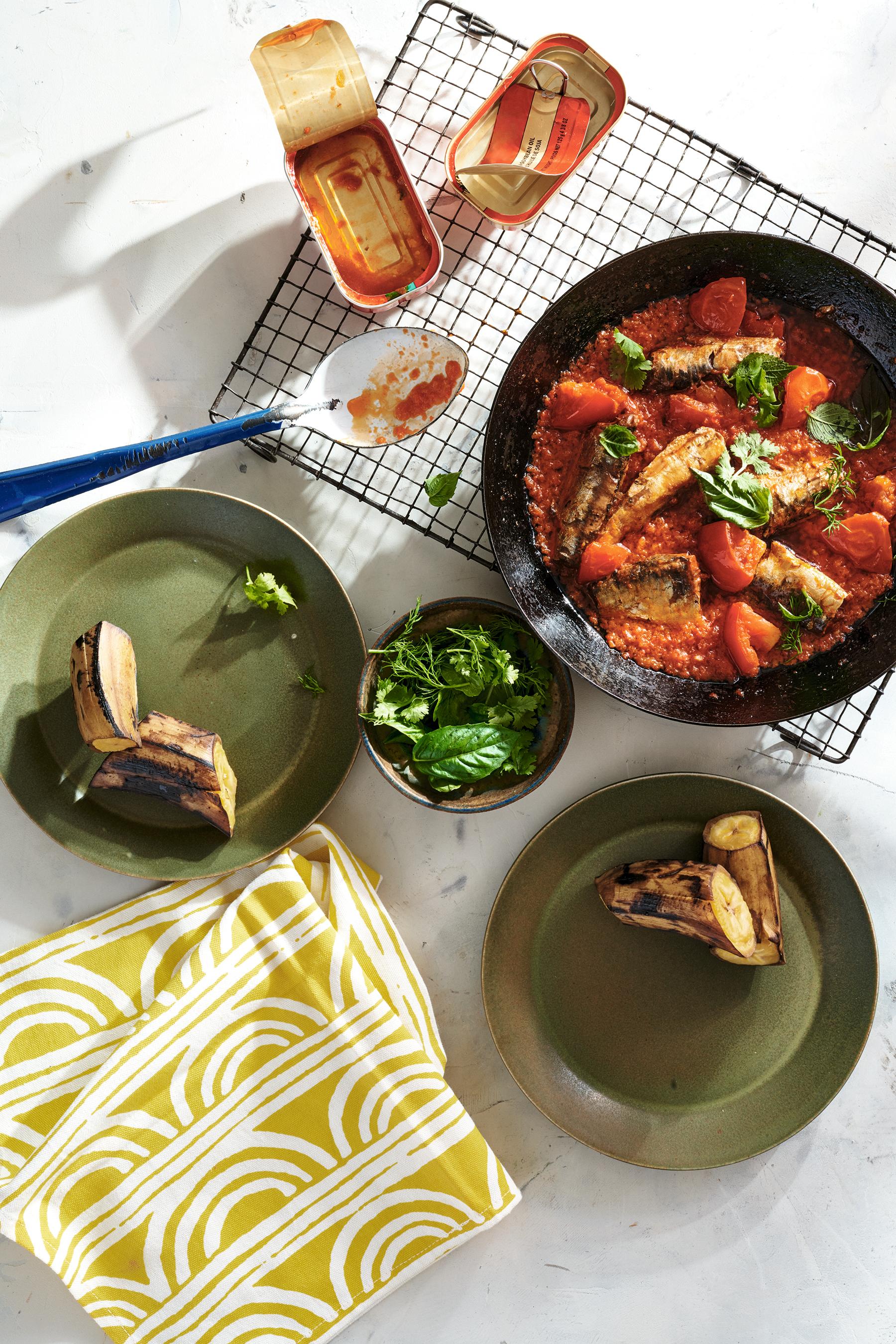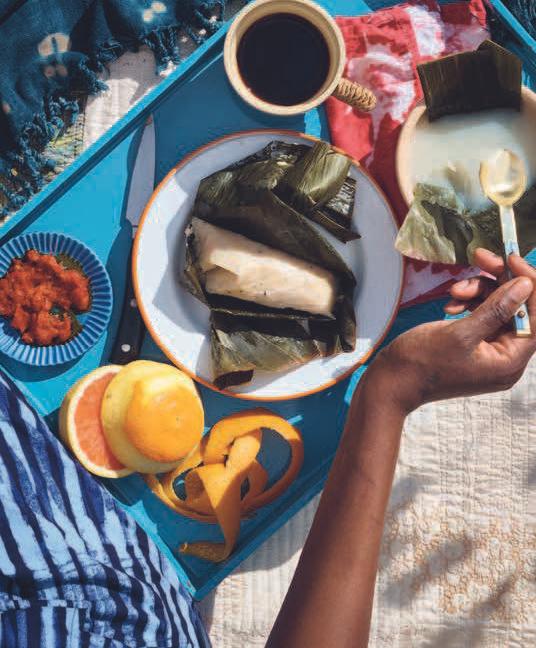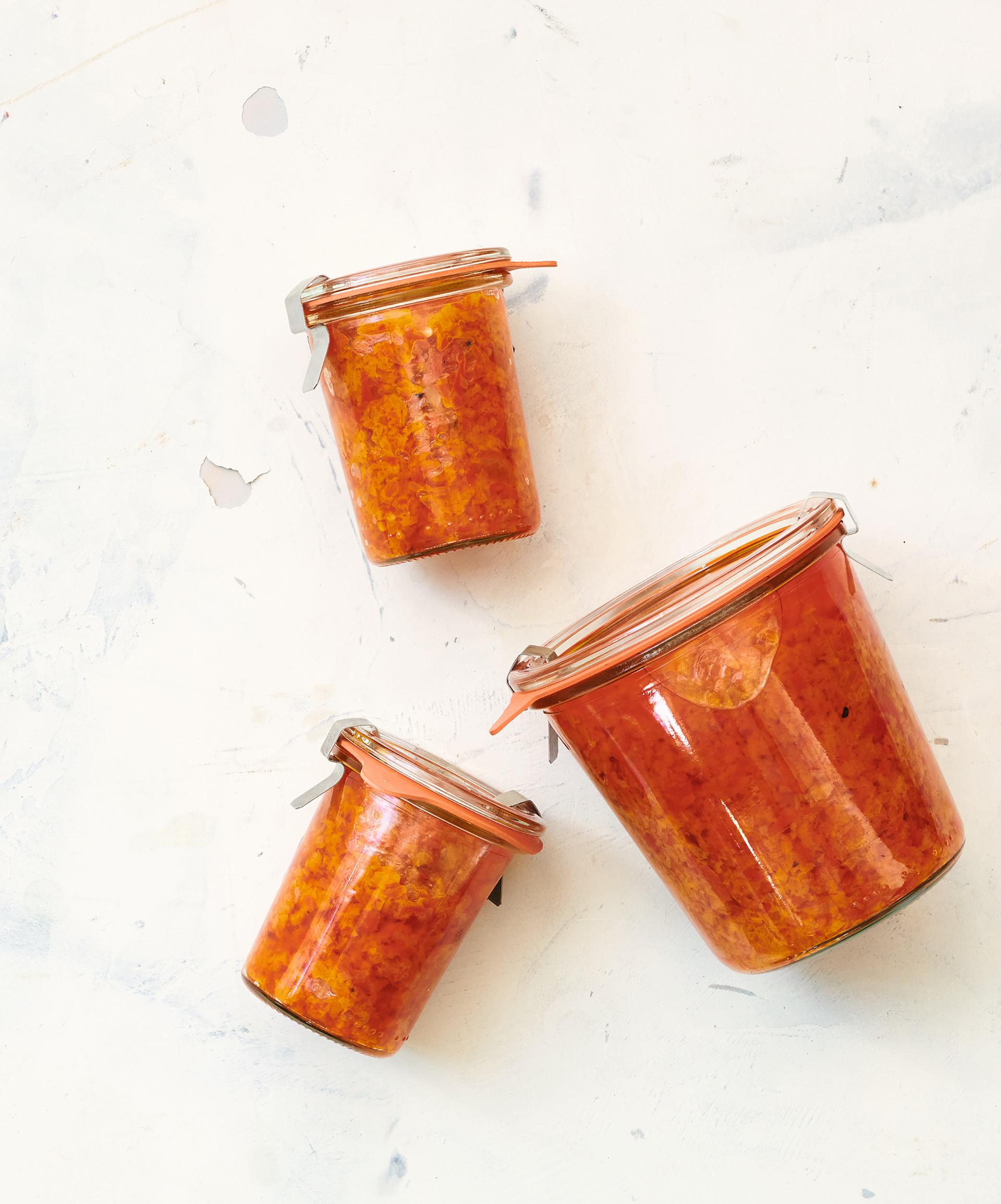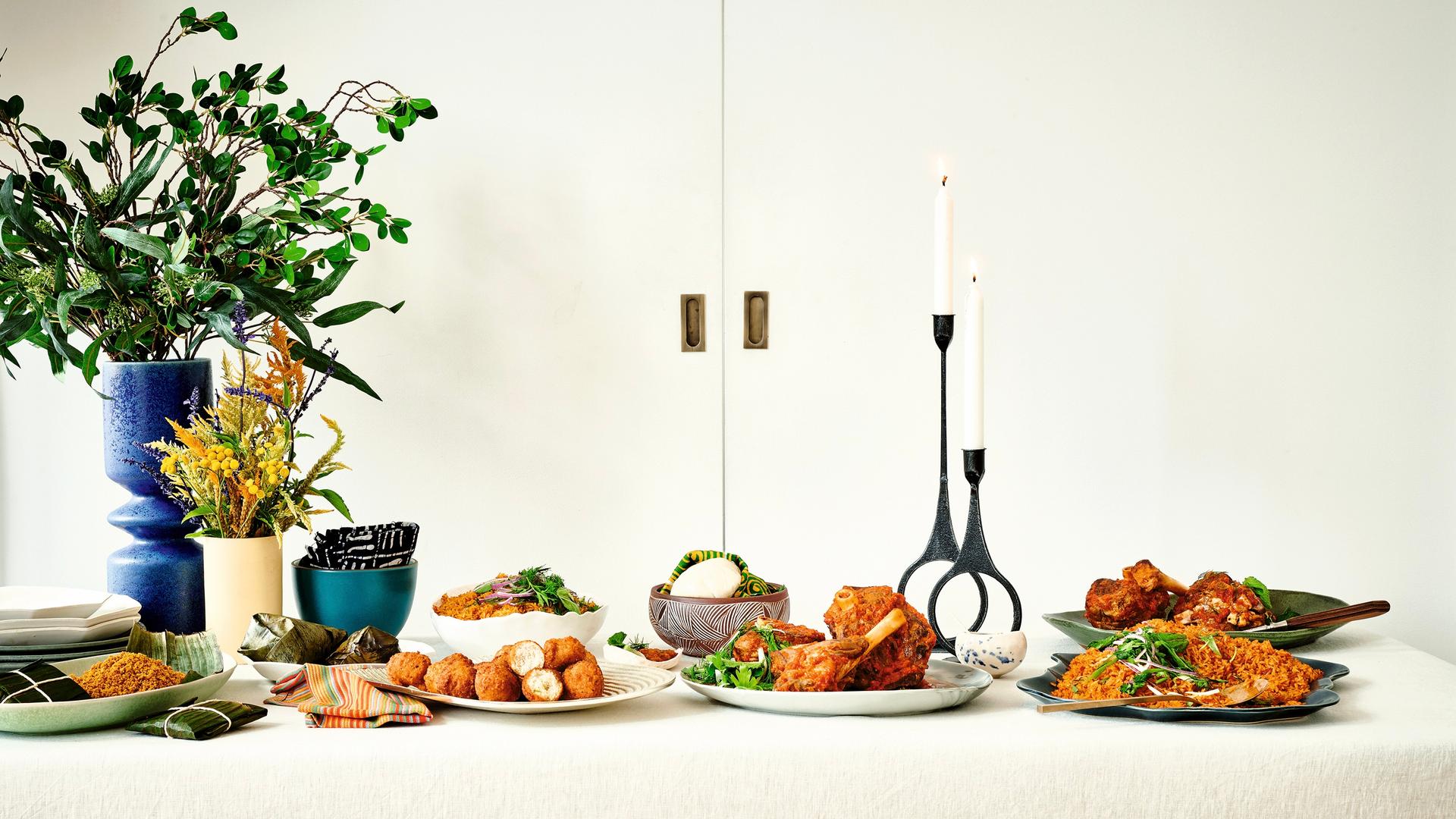Take a spin through your local grocery store, and with some creativity and the right guide, the ingredients you take home can transport you to another place entirely.
Yewande Komolafe is someone who can show your belly the way to Nigeria.
She grew up in the country’s biggest city, Lagos.
Komolafe is a food writer with The New York Times and just published a cookbook, “My Everyday Lagos: Nigerian Cooking at Home and in the Diaspora,” about the food of her hometown and how she recreates dishes from memories and word-of-mouth.
She joined The World’s Marco Werman to share more on it.
Marco Werman: So, your new cookbook is more than a bunch of recipes. It’s also kind of a love letter to Lagos and a search to define your own identity through food. What inspired you to write it?
Yewande Komolafe: I think that living here in the US, and not being able to go home, I go through it in the book where I tell the story of being undocumented and unable to access the place that I grew up, to the extent that I started to wonder if I really grew up in Lagos and if I really had a childhood in Nigeria. So, food is the way I translate the world, and it felt natural to turn to food to help me explain and describe my experiences. That was the inspiration behind the cookbook.
In your late teens, you came to the US, went to culinary school, worked in restaurants and were unable to return to Lagos for 18 years. In that time, what were the challenges you ran into when you first started trying to reproduce the authentic flavors of Nigeria?
I wondered what authenticity was. I had that question come up a lot for me. Like, am I still Nigerian if I haven’t been there or if I haven’t revisited? Is this stew or this plantain that I’m making in Brooklyn in my kitchen, are they Nigerian because I’m making them or are they Nigerian because the recipe is Nigerian? I shifted to the idea and decided that the food I make is authentic to my experience, and that is what it is. I think also a challenge was that I was making many of these things from memory and conversations, talking to my mom, talking to my aunt, remembering how my grandmother cooked. So, I wasn’t working off a script of recipes I already had. I was kind of creating the recipes from what I remembered.

When you finally were able to return to Lagos for a visit in 2017, how much had the food there changed from your childhood or changed from your memory of what you had eaten?
It was so exciting to discover that the flavors and tastes I remembered were so much more intense. I remembered I was cooking food from Nigeria in Brooklyn. But I felt when I returned to Lagos that what I was making wasn’t intense enough. Like, oh, everything in Lagos and Nigeria just inspired me so much, and it felt like my senses were on fire the entire time I was there. And so when I returned, when I came back from that trip, I just intensified like the pepper in my stews and the spices in my pepper soup. All my flavors got way more intense and impactful.
Tell us about a few dishes in your cookbook, Yolanda, that are really staples of cooking in Lagos.
There’s akara, which is a fritter made from ground honey beans. It’s slightly sweet if you decide to put some onions in it, like I do. It’s got that aromatic flavor. It’s something that just reminds me of celebration food. It reminds me of my grandmother because she would always make it, wrap it up in newspapers and send it by courier to us. And it requires a gentle touch to make it fluffy and light. I also talk about ogi, which is something that I learned to make during the pandemic, just long hours of sitting home with my 1-year-old. Ogi is a porridge made from fermented corn starch, and it’s a morning food. It’s just something that settles your stomach. It’s something that I always turn to for comfort. It’s almost like eating oatmeal in the morning. It’s warm and comforting and feels like a hug in a bowl. I started buying different colors of corn because it’s typically made with white and yellow corn. But I discovered here that I could get a little pink corn or indigo blue corn. So, I started experimenting with different colors of corn. Now I make a blush pink ogi or indigo ogi, and it’s just fascinating to see that process.

I love that description of a warm hug and a bowl. But, you know, porridge is pretty common all across Nigeria and West Africa, right?
Absolutely. We eat a lot of porridge. We eat a lot of starches that have been cooked down until they just sort of melt away into the broth.
Lagos is a massive city with commuters spending long hours on the road. How does that day-to-day reality affect who does the cooking and what they cook?
There’s a lot of prep that happens ahead of time. And the way I arranged the book by the chapters was kind of a direct result of that experience of spending time in traffic Monday through Friday in Nigeria. My 2020 trip to Nigeria, I spent a lot of time commuting, spending time in traffic and just going back and forth. And I realized how much time is spent in traffic. And I realized that that influences the amount of time you have to cook. So, I noticed that my mom would make many things on the weekends, and many of the ingredients she used were broken down and prepped on the weekends. It made the meal times just so much quicker. So I have sort of adopted that thought process and that prep process, if you will, where I always have an ata din din in my fridge. And that’s the base for so many of our Nigerian dishes. So when I come home after work, the kids run around and want to eat, I just know that I can pull out my ata din din, make some white rice and then we have a meal. So there’s a lot of prep that happens ahead of time.

You need the mortar and pestle, and you need somebody to pound away at the…
Yeah, absolutely. But I mean, now there’s, like, substitutions and, you know, honestly, most people use the powders in Nigeria, also. Not everybody likes buying yams or cassava root and pounding it from scratch.
We should describe fufu.
That’s true. Fufu is a starch that has been either mashed or pounded into a dough that’s elastic, and it’s typically used as a vessel for soups and stews. But now they’re dehydrated powders made from the starches. So there’s like cassava root powder or yam powder. There’s garri, which is fermented and dehydrated cassava granules that are used to make this fufu. You can make it either by pounding the starch, boiling it and then mashing it. Or, you could also just grab a powder and make it into a dough. So there are different ways you could make it. If you’re looking for that exact taste that you would have in Lagos, I think that you just have to hop on a plane and go there.
This interview has been lightly edited and condensed for clarity.
Sign up for our daily newsletter
